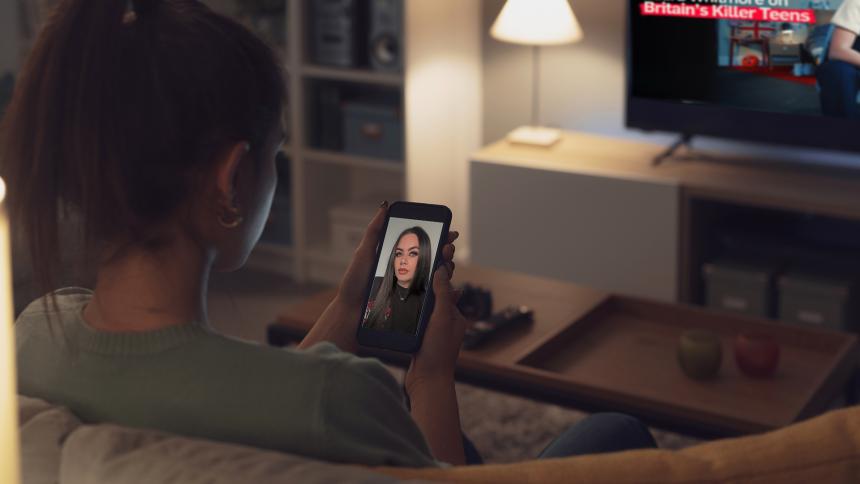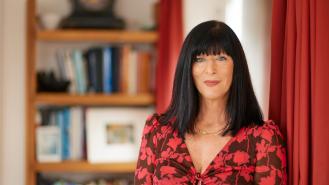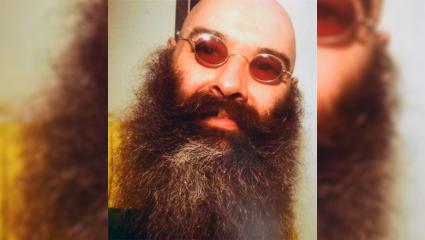
Why is true crime so popular with younger audiences?
True crime was once considered a niche interest confined to courtroom dramas, late-night documentaries and tabloid headlines. But it has established itself as one of the defining cultural obsessions of the last decade.
It’s come a long way from the days of late-night TV and paperback thrillers, now dominating streaming services, podcasts and social media feeds.
At the heart of this surge, Crime+Investigation have recognised a new demographic.
Meet the new true crime fans
Gen Z and Millennials are not just watching and listening in record numbers; they are shaping the very way these stories are told. According to Pew Research, 41% of podcast listeners now tune into true crime shows regularly, and in 2022, 18-29 year olds consumed more hours of true crime content per week than any other age group.
To understand what lies behind this fascination, Crime+Investigation spoke with True Crime Caitlyn, a UK-based creator who has built an audience of more than half a million followers across social media platforms. Her work offers a window into how young audiences consume true crime and why it resonates so deeply.
Caitlyn’s journey mirrors the path of many new fans. She credits her fascination and success today to her Nana’s early influence.
'She always had NCIS or CSI: Miami on the TV, and I would sit and watch it with her,” she explains. “I remember her watching the news each morning and following the disappearance of Madeleine McCann.'
In just three years, Caitlyn has built an impressive following, and with 72% of her audience under 35, it’s one that perfectly mirrors the demographic driving the true crime boom.
Caitlyn’s rise shows how today’s audiences are not only consuming true crime but actively shaping its future through the creators they follow and the conversations they spark.
@truecrimecaitlyn The Case of Debbie Leitch | #fyp #truecrime #truecrimetok #blackpool ♬ original sound - truecrimecaitlyn
The mainstream explosion of true crime
The contemporary true crime boom can be traced back to several key turning points. While dramas and shows like The Bill or Dispatches established a foundation, the launch of Making a Murderer on Netflix in 2015 cemented true crime as a mainstream genre. The documentary’s blend of real-life mystery, systemic injustice and bingeable storytelling gripped global audiences. It signalled a shift: true crime was no longer niche or specialist TV, but must-watch, must-discuss content.
Podcasts accelerated the trend. Shows like Serial demonstrated how audio could immerse listeners in layered investigations, sparking debates that extended well beyond the cases themselves. Today, with nearly half of podcast listeners engaging with true crime regularly, the genre sits at the centre of digital storytelling.
Controversial stories and cases, such as the Karen Read trial, receive far more interest than ever as listeners discover them through podcasts.
Crime+Investigation spoke to five true crime fans from across the UK to understand how their viewing habits have evolved. 'I used to watch true crime in a more linear way, but now it’s mostly on YouTube,' Robyn (33) says.
Others described moving gradually from television documentaries and news headlines to podcasts, social media and short-form TikTok clips. As Seb (38) explains: 'I started with linear shows like Dispatches, then moved to YouTube channels like Crime Watch Daily and now I mainly use TikTok and Netflix.'
For Kim (38), the choices available to true crime fans have become far broader: 'Back then it was all TV documentaries and news headlines. Now it’s podcasts, YouTube deep-dives and Netflix binges. True crime is everywhere.'
But while streaming services and podcasts opened doors, social media has blown them wide open. Platforms like TikTok and YouTube are now where many young people encounter their first true crime story – often in short, sharp and highly shareable formats.
Generational roots: growing up with true crime
For many younger viewers, true crime entered their lives not through viral clips but through the living room. Caitlyn recalls how her early interest was sparked by her Nana’s own interest:
'For a lot of us, the world of true crime was opened by our parents. Many people’s fascination began with detective or crime shows they watched growing up. For me, it was my Nana, who raised me.'
Her early exposure to crime stories, such as the disappearance of Madeleine McCann, often left a lasting impression:
'At that time we would go on an annual holiday to Turkey. Her case stuck with me because it could’ve been me, it could’ve been anyone at that time.'
And only a few years later, she encountered the case of James Bulger – and with it, a set of haunting questions. 'I became so interested in how someone my age could commit such evil. Why did they do it? What drove them to it? I still carry those questions with me today. I think my generation, being inquisitive as we are, always want to know: Why? How? Digging for those answers is part of what drives the obsession.'
Fans we spoke to also recalled the first cases that drew them into the world of true crime. For some, it was notorious figures like Fred and Rose West, while others remembered UK tragedies such as the murders of Stephen Lawrence or Damilola Taylor. Ben (31) mentions Raoul Moat and the disappearance of Madeleine McCann as being particularly captivating, while Kim describes the Soham Murders as being 'chilling, tragic and the first true crime story that really stayed with me.'
These early encounters, often tied to highly publicised cases, left a lasting mark, just as Caitlyn’s memories of McCann and Bulger shaped her own fascination.
This drive to ask questions, to make sense of incomprehensible acts, may explain why Gen Z in particular are so drawn to true crime. Unlike previous generations, who might have consumed such stories passively, younger audiences actively seek to understand, analyse and share them.
Why Gen Z and Millennials are so engaged
Caitlyn sees this divide reflected clearly in her own audience. Nearly three-quarters of her followers (72%) are aged between 18 and 34, while only a small minority – around 3% – are 55 or older.
As Caitlyn explains: 'My audience has always been prominently younger, which I think comes down to TikTok having so many younger users. I know my cousins and grandparents don’t even have the TikTok app but they’ll happily sit and watch a documentary on Crime+Investigation.'
But the popularity of true crime among younger audiences cannot be explained solely by age or curiosity. This cultural pull also has psychological and social dimensions.
One factor is a desire for education and awareness. Caitlyn resists describing true crime content as 'entertaining', emphasising instead its potential to inform:
'For many of my viewers it’s about education – learning the early signs of domestic violence, how coercive control can look or warning signs of mental health issues.'
The true crime fans we spoke to echoed similar reasons for their own fascination. Some pointed to the 'morbid curiosity' and shock factor, while others highlighted the investigative element – the chance to glimpse unusual jobs and processes usually hidden from everyday life.
'I got into true crime as a teenager. At that age, you’re learning about different emotions and different people, and I was curious,' Aydan (27) reflects. 'True crime gave me a window into a world that most people wouldn’t normally be exposed to.'
In a world where conversations about safety, mental health and social justice are increasingly prominent, true crime becomes a framework for younger generations to explore difficult but important realities. Consuming these stories allows them to feel better prepared, more aware of risks and in some cases, more empowered to speak up.
There is also an emotional dimension. For an age group navigating uncertainty – from global instability to the anxieties of daily life – true crime offers a structured way to confront fear. Stories have beginnings, middles and often, resolutions. Unlike the abstract unease of scrolling through news headlines, true crime provides narrative closure, however imperfect.
The TikTok effect
If the psychological and cultural backdrop explains why younger audiences are drawn to true crime, TikTok explains how they consume it.
'TikTok has completely changed the true crime world. The For You Page makes it easier than ever to find new content,' Caitlyn explains. 'On YouTube you’d need to search for it, but TikTok can drop a video on your feed and suddenly you’re hooked.'
This shift in discovery has democratised true crime storytelling. Whereas once audiences relied on networks or production companies, any individual can now create content reaching millions. Caitlyn highlights that the short, digestible format of TikTok – with videos often under ten minutes – perfectly suits busy, multitasking viewers.
'Ten minutes or under is the perfect amount of time to tune into a video while you’re getting ready or cooking. The short and snappy content really engages some audiences.'
However, the platform also brings challenges. While TikTok has enabled respectful, ethical creators to thrive, it has also given space to sensationalist voices. Caitlyn recalls her discomfort at watching some creators spread misinformation and conspiracy theories around the Idaho murders case, underscoring how easily the genre’s reputation can be damaged.
Take a look at one of Caitlyn’s latest videos, where she covers the tragic case of Tia Rigg, and see her storytelling approach for yourself.
@truecrimecaitlyn The Case of Tia Rigg | #fyp #truecrime #crimetok #solved ♬ original sound - truecrimecaitlyn
Standout cases that resonate with Gen Z
Certain stories seem to hold particular power among younger audiences. Caitlyn points to the Watts Family Murders, the Soham Murders, the Menendez Brothers and the case of Gypsy Rose Blanchard as examples of content that has gone viral among her Gen Z followers.
The reasons for this are complex. High-profile cases often act as 'entry points' for new fans, who are drawn in by media coverage before branching into lesser-known stories. Many of these cases also involve themes that resonate with young viewers – family dysfunction, betrayal, the pressures of youth – making them feel immediate and relevant rather than distant historical tragedies.
By starting with familiar, headline-grabbing cases, Gen Z audiences develop the confidence and appetite to explore more obscure or overlooked crimes, expanding their understanding of the genre.
Respect vs exploitation: the ethical debate
No discussion of the true crime boom is complete without addressing its controversies. Critics have accused the genre of sensationalism, exploitation and even retraumatising victims’ families.
Caitlyn is candid about the risks: 'Unfortunately TikTok has an even mix of respectful, ethical creators versus disrespectful ones. The latter sensationalise, glamorise, victim blame, make up conspiracies – which is totally unacceptable.'
She believes the media often fails to recognise the difference between exploitative and responsible creators, unfairly painting the entire community with one brush.
For Caitlyn, the line is clear: 'I would never want to come across as exploitative or sensationalising a crime. My content aims to be educational, but it has to be engaging too. Above all, the people closest to the crime must be considered.'
Her approach reflects a broader trend among younger creators, who are pushing for a more ethical, respectful form of storytelling. This may prove essential if the genre is to maintain credibility in the years to come.
Crime+Investigation’s true crime fans also reflected on how the influx of younger audiences has changed the community. 'The shock factor has gone up, and there are more options to watch because demand has grown – which is great.' Robyn says. Similarly, Seb has noticed that 'Younger fans have pushed the genre into more taboo areas. There’s a thirst for more controversial content.'
Aydan feels accessibility is the biggest shift: 'True crime has become much more accessible and no longer feels niche – it’s more mainstream.' Several mentioned the move away from traditional TV or books, with Kim observing: 'Younger audiences consume content on TikTok, YouTube and podcasts rather than traditional TV or books, so the community is now more online and fast-paced.'
What is the future of true crime?
So what comes next?
For Caitlyn, the future of true crime lies not only in continued popularity but in positive influence.
'I think the boom will continue and I hope it impacts the world in a positive way. People may want to go into professions like law, forensics or policing, or simply become more cautious in their decision-making.'
If true crime inspires new generations to pursue careers in justice or public safety, its impact may extend far beyond entertainment. Already, there are signs that young fans are treating these stories less as idle distraction and more as life lessons – tools for understanding risk, recognising warning signs and appreciating the human cost of violence.
At the same time, platforms will continue to evolve. While long-form documentaries on television remain as popular as ever, short-form social media continues to draw younger demographics. The challenge will be ensuring that accessibility does not come at the expense of accuracy and respect.
Not just a passing fad
True crime’s grip on Gen Z and Millennials cannot be dismissed as a passing fad. Rooted in early formative experiences, fuelled by platforms like TikTok and sustained by a mix of curiosity, education and emotional resonance, the genre has become a defining cultural lens for under-35s.
With a 400% increase in people searching on Google for 'true crime' over the past decade, spikes often coincide with a viral moment – from Netflix’s Making a Murderer to the rise of TikTok storytellers reaching millions of viewers in seconds.
Fans also told us that younger audiences are changing the tone of the genre. 'Younger audiences show a lot less victim blaming and challenge older ways of thinking, particularly around consent and true crime in general.' Aydan says. Others noted that younger fans are often more willing to explore international or lesser-known cases, question media portrayals and even research stories themselves – making them more aware of how true crime content is produced.
At the same time, the rise of under-35 audiences has made the genre feel more like a shared space. Aydan continues: 'Social media platforms have made it easier to build communities.' Others pointed out that while Reddit groups and forums have always existed, the cross-platform nature of TikTok, YouTube and podcasts has made true crime far more accessible and interactive than ever before.
With creators like True Crime Caitlyn leading the way, the true crime boom is not only surviving, it is evolving. By emphasising education over exploitation and respect over sensationalism, this new generation is reshaping how society engages with crime stories.
In doing so, they are proving that true crime is not just about looking back at the darkest moments of the past. It is also about shaping a more aware, informed and responsible future.
Are you a true crime buff? Stay in the know with the Crime+Investigation newsletter! Get exclusive access to new articles, episodes, clips, competitions and more – delivered weekly and completely free. Don't miss out – sign up today!
















